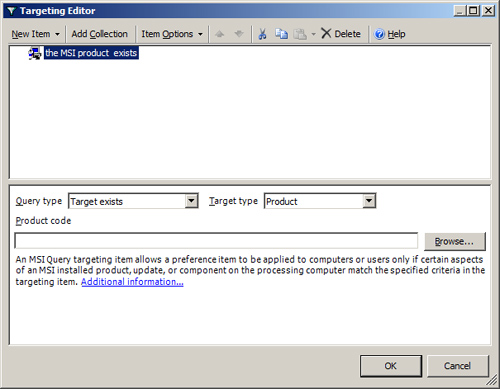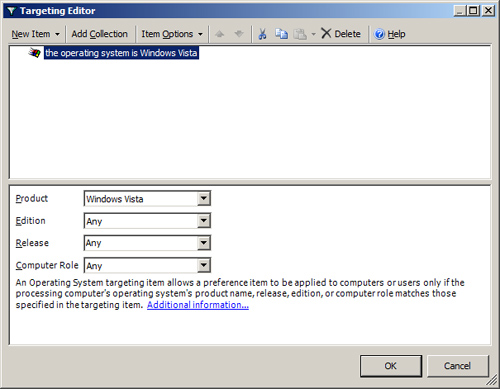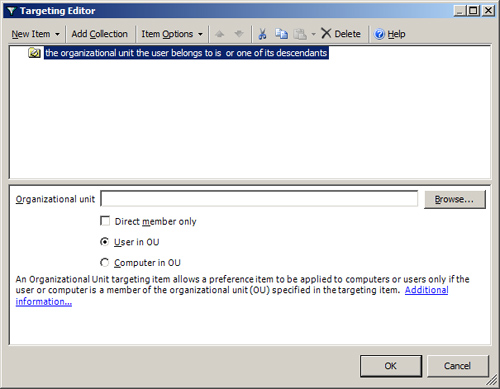MAC Address Range
A
MAC Address Range targeting item allows a preference item to be applied
to computers or users only if any of the processing computer’s MAC
addresses are within the range specified in the targeting item.
MSI Query
An MSI Query targeting item, shown in Figure 12,
allows a preference item to be applied to computers or users only if
certain aspects of an MSI installed product, update, or component on
the processing computer match the specified criteria in the targeting
item. The item will process based on which Query Type and Target Types
are selected. Table 3 helps clarify what the item will process based on the criteria selected.

Table 3. MSI Query Item-Level Targeting Criteria
| Query Type | Target Type | Will Process If... |
|---|
| Target exists | Product | The product with the specified Product code is installed. |
| | Patch | The update with the specified Patch code is installed. |
| | Component | The keyfile of a component with the specified Component code is installed. |
| Version match | Product | The product with the specified Product code is within the specified version range. |
| | Component | The keyfile of a component with the specified Component code is within the specified version range. |
| Get property
or
Get information | Product | The product with the specified Product code is installed. |
| | Component | The keyfile of a component with the specified Component code is installed. |
| Match property
or
Match information | Product | The product with the specified Product code is installed. |
| | Component | The keyfile of a component with the specified Component code is installed. |
Note
The targeting item does not allow the preference item to process if the property or information item has no value. |
Operating System
An Operating System targeting item, shown in Figure 13,
allows a preference item to be applied to computers or users only if
the processing computer’s operating system’s product name, release,
edition, or computer role matches those specified in the targeting item.

Organizational Unit
An Organizational Unit targeting item, shown in Figure 14,
allows a preference item to be applied to computers or users only if
the user or computer is a member of the organizational unit specified
in the targeting item. The Organizational Unit box accepts preference
processing variables. Press F3 to display the Select a Variable dialog
box, which lists the system-defined variables from which you can select.

Note
Having
membership in a security group that is located in the configured
organizational unit does not make the user or computer a member of the
organizational unit. |
PCMCIA Present
A
PCMCIA Present targeting item allows a preference item to be applied to
computers or users only if the processing computer has at least one
PCMCIA (Personal Computer Memory Card International Association) slot
present. A PCMCIA slot is considered present when the drivers for the
slot are installed and the slot is functioning correctly.